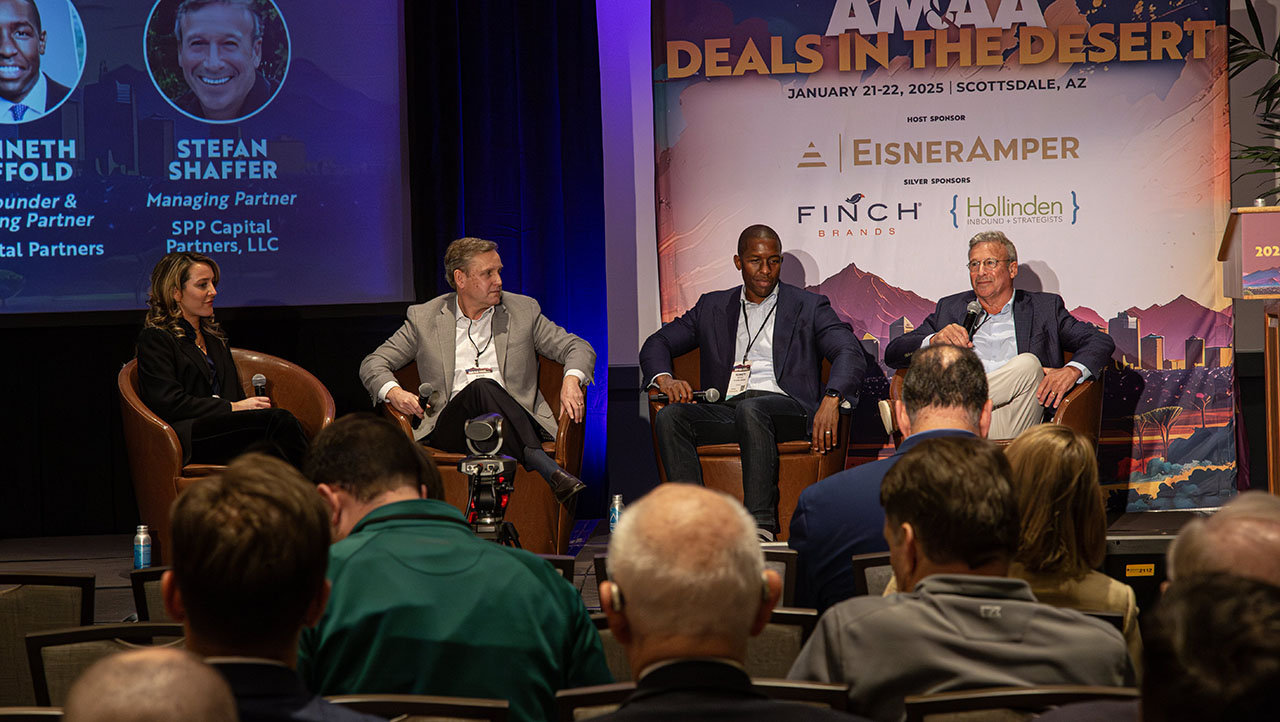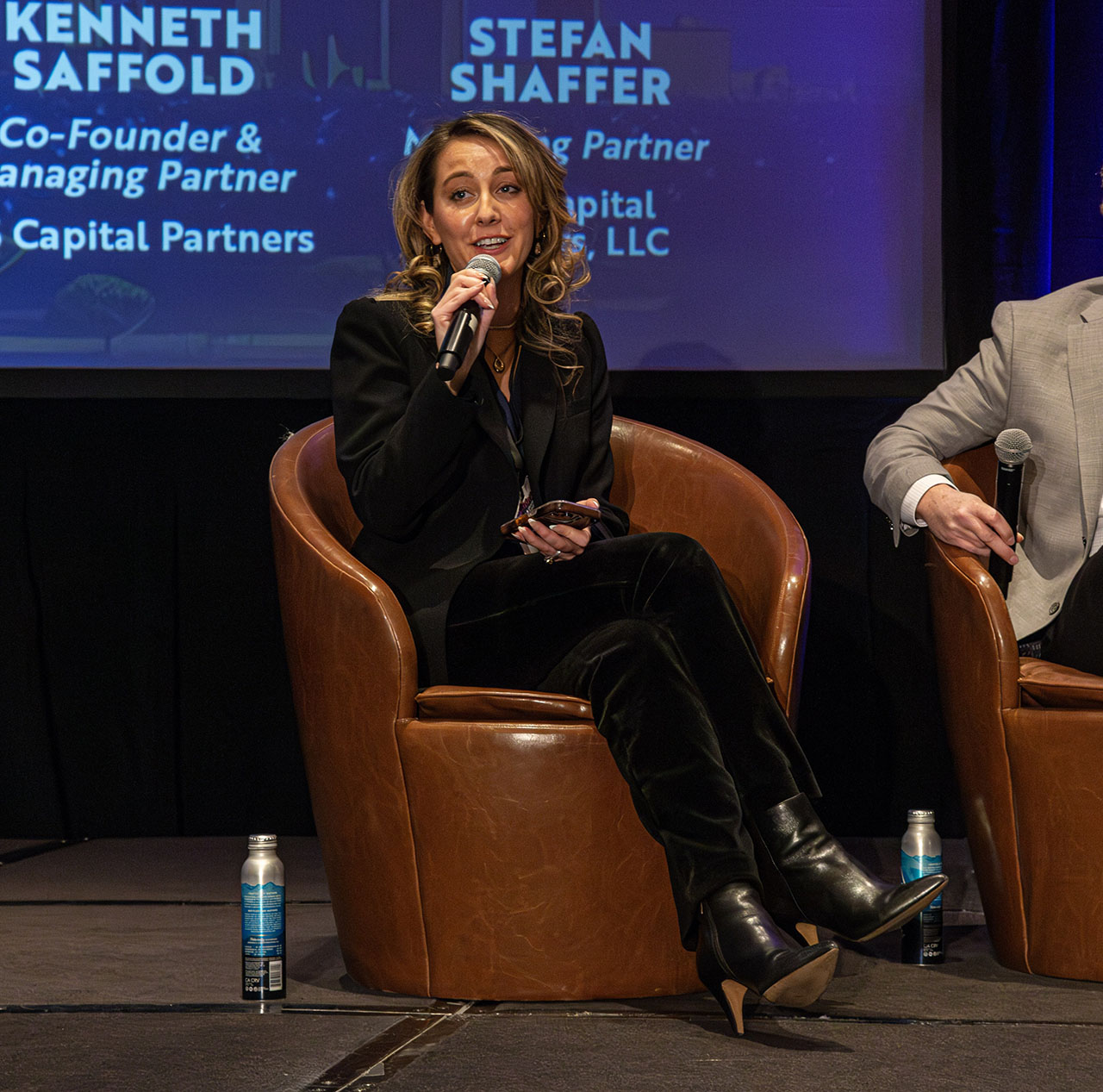The AM&AA Winter Conference, held late January in Scottsdale, Arizona, brought sponsors, attendees, and speakers together face to face, to learn about M&A tools and trends and discuss the industry’s hottest topics.
On Wednesday, January 20, the conference’s programming continued with a General Session entitled “Trends in Financing You Should Know About”, where the panel discussed alternative financing avenues and the trends and challenges of middle market M&A. Amanda Foyt, VP of Middle Market for Comerica Bank, moderated panelists Todd Morrissey, Co-founder, Hidden River Strategic Capital; Kenneth Saffold, Co-Founder and Managing Partner, o15 Capital Partners; and Stefan Shaffer, Founder and Managing Partner of SPP.
Foyt opened the panel with a discussion on current market conditions and alternative financing growth. While the numbers the last few years have been less than stellar, 2025 was expected to improve as market conditions stabilized. “I think it’s going to be a much more active year in 2025,” SPP’s Shaffer said.
o15’s Saffold noted that “the private lending space now holds $3 trillion in deployable capital,” as private capital markets, including SBIC-backed funds and non-bank lenders, continue to expand their presence in lower middle-market transactions.
In terms of deal size, typical transactions in the lower middle-market involve businesses with $3-$15 million EBITDA, though—as with everything discussed in the panel—some flexibility exists.
“We target $15 million in revenue and cash flow-positive businesses,” said Morrissey, but added that they “remain open to smaller opportunities with clear visibility to growth.” He clarified that “[I]f something is $200,000 of EBITDA and there’s visibility, $2 million plus, and it’s cash flow sustainable, those are the kinds of deals that we want to look at.”
Leverage levels for smaller deals average 2.5-4x EBITDA, with non-bank lenders stretching for high-quality opportunities such as those with recurring revenue or SaaS models.
“In the lower middle market,” said Shaffer, “senior bank lending tends to top out at 2.5x EBITDA.” Sub-$3 million EBITDA businesses face difficulties accessing capital, relying on SBICs or alternative lenders to bridge financing gaps. “The SBIC community is critical for smaller businesses,” he noted, “offering unitranche solutions when banks hesitate.”
Larger firms such as BlackRock also sometimes compete in smaller deals, particularly in sectors like healthcare, business services, and education (the three sectors that Saffold’s o15 cover). “We recently closed a DSO platform deal with BlackRock,” Saffold related, “highlighting their selective entry into the space.”
Instruments like warrants, clawbacks, and holdco notes provide flexibility for addressing valuation gaps or capital constraints, especially in bespoke transactions. “We evaluate any structure that ensures alignment and strong returns,” Morrissey said.
Saffold listed off the three main channels: independent sponsors, investment bankers, and private equity groups, noting that independent sponsors and fund-less sponsor channels are gaining traction but can present quality challenges. “Independent sponsors bring a lot of deal flow,” he said, “but quality can trail compared to advisor-led or sponsor-driven deals.”
Above all, flexibility is key. Creative deal structuring, including debt/equity hybrids, preferred equity, warrants, and unitranche loans, is increasingly common. “Our deals often involve a 70/30 debt-to-equity split,” Morrissey explained, “but we can tailor capital structures based on company needs.”
That said, private equity sponsors increasingly seek disciplined capital structures, with equity contributing 40-50% of the capital stack. Saffold emphasized, “We like to see 50-60% equity in deals, with management rolling a meaningful portion.”
Above all, collaboration between lenders and sponsors relies on access to management teams, industry expertise, and clear capitalization plans. As Morrissey noted, “Direct relationships with management are critical for us in evaluating opportunities.”






